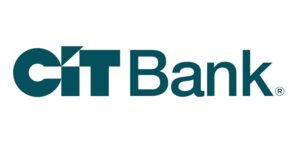
Revolving credit accounts allow consumers to borrow capital up to a certain limit. Personal lines and home equity lines of credit are popular forms of revolving credit products. This is useful for financial emergencies and can help you manage your money over time.
It’s important to fully understand the basic characteristics of a revolving credit account. If you want to learn more, continue reading on below.
How Does a Revolving Credit Account Work?
A revolving credit account lets borrowers access capital up to a maximum limit. People can withdraw the available funds and choose to either repay the principal fully or carry a balance to the next period.
Minimum payments are due each month, but the amount depends on the loan agreement. Repaid principles are eligible to be carried on in the next periods, while any outstanding loan will usually incur interest charges.
Revolving Credit vs. Installment Credit
Installment credit such as personal or student loans lets you borrow a sum that is paid back in monthly payments. Once you pay off an installment loan, you either have possession of the asset or you simply become debt free.
With revolving credit, you can pay off the amount spent and then access the money again as long as the loan is still open. With this being said, paying off debts in full and on time will improve your credit score.
Types of Revolving Credit Accounts
The top three common types of revolving credit accounts are credit cards, home equity lines of credit (HELOCs) and personal lines of credit.
According to the American Bankers Association, there are 374 million open credit card accounts in the U.S., making it one of the most popular loan instruments. Credit cards give temporary spending flexibility and liquidity to make purchases that will be settled with a cash payment to the lending bank. It would be smart to keep credit card balances as low as possible or pay them in full every month to avoid those extra finance charges.
A HELOC lets consumers access the equity they’ve built up in their real estate properties. These lines of credit are limited by the amount of home equity. These credit accounts are meant to finance large purchases such as home improvements, new property purchases and capital for businesses. HELOCs carry much lower interest rates than credit cards because they are secured by the value of real estate. Before committing to a HELOC, homeowners should consider fees for application, origination, annual service and other items.
Similar to a credit card, a personal line of credit is a less common type of revolving credit account. Borrowers can withdraw any amount up to a certain limit and they pay interest on the amount withdrawn. They carry high interest rates so this is something you should look out for. The main difference between personal lines of credit and credit card accounts is the physical card itself.
 |
 |
Bottom Line
You should also consider how revolving accounts affect your credit. They can provide access to special benefits as well as liquidity for important purchases, investments or credit consolidation.
There are many pros and cons when it comes to revolving credit accounts so consider these before you commit! For more posts like this, check out our list of bank guides!




Leave a Reply